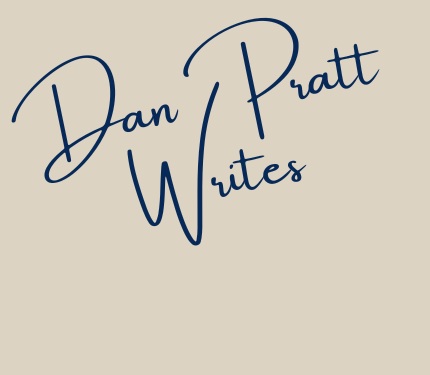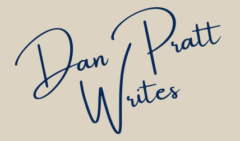How To Make A Good Story Title
The title can easily be one of the most important parts of your story. A title is what can, or fail to, capture a reader’s attention. Here are some tips on how to create the perfect title for your story.
Every writer knows that no matter how good your writing is if you can get someone to read it you won’t get very far. Your story’s title is a huge part of grabbing a reader’s attention. The title is a reader’s first introduction to your story and tells them what your story is about. A good title can spark interest and make a reader pick up a book or open a link. A bad one, well might cause the reader to skip your story altogether.
A good title is also an essential part of submitting your stories for publication. Editors are busy people, and can easily dismiss your story out of hand because of a bad title. The story’s title is your opportunity to demonstrate your creativity to both readers and editors. Don’t waste it.
What Makes A Good Title?
As we have discussed, a good book title needs to catch a reader’s attention and hook them in. But how does it do that? How do you create a title that serves as a bridge between you and a reader?
There are three things that a title should be to help it stand out to a reader. Be memorable. Be unique. And most importantly, provide insight.
1. Be Memorable
How many times have you been telling a friend about a book you are reading and loved? Now, how often do you pause when you are asked the title of the book as you realise you can’t remember it?
I’m sure there have been times, there definitely have been for me. Of course, not every story title will be forever etched in your mind. But a memorable book or story title will not only increase your chance for referrals but will also increase engagement with existing readers as the title stays in their minds even when they aren’t reading it.
2. Be Unique
One way to help ensure your title is memorable is to make sure it is unique. Many writers struggle to come up with unique titles for their stories and end up going with something simple, such as ‘The Gift’ or ‘The Box’. While short simple titles can be powerful, these aren’t very unique.
In the article, Top Ten Most Common Short Story Names, Clarkesworld Editor Neil Clarke highlighted some commonly used titles from submissions. Among 50,000 submissions, the title “Dust” was used 18 times, “The Box” was used 15 times, and “Lost and Found” was used 13 times.
While coming up with a title that hasn’t been used before is challenging, you should ask yourself: Do you want to submit a story that has the same title as dozens of other submissions? Wouldn’t you rather stand out?
3. Provide Insight
The title gives you an opportunity to give a hint to the reader as to what your story is going to be about. This is vital when so much of the process of crafting a story is trying to determine what the story is actually about. I personally usually wait to create the title until I am finished writing, so I know what the story is really about and can reflect that in the title.
Things to think about here is the tone of the story. What happens in the story? Is there a key character that could carry the title? Is there a pinnacle object or action that the story revolves around?
The insight that you give doesn’t have to make sense at the start. In fact, that is a good way to trigger curiosity in your reader. One of my favourite book titles is ‘Midnight Plus One’ by Gavin Lyall. The minute I saw the book cover I was intrigued and picked it up. I wanted to know what happened at midnight.
How To Come Up With A Good Title
Now that we have looked at what a title has to do to be good, we need to discuss how to come up with that engaging and eye-catching title for your story.
Pull It From The Story
A great way to come up with a title for your story is to use a particularly catchy or engaging line from your story. This is similar to when a movie (often painfully) adds the line of the film into dialogue. The difference is you are taking the title from the writing, rather than the other way around.
To do this, simply skim-read your story while keeping an eye out for interesting phrases or imagery in your story. Keep a note of them and then when you are done you will have a list of potential enticing titles to choose from. Feel free to play around with them. Change the tense, make them singular or plural, whatever it takes to make it an engaging title.
The main benefit of this approach to creating a title is in most cases it will definitely fit the tone of the story.
Brainstorm
Brainstorming is a tried and true method of coming up with possible solutions, and it works for story titles too. After you’ve written your first draft, it’s time to brainstorm your title. Get yourself a pen and pad of paper and write down every potential title you can think of. Keep going until the well has run dry. Use one idea to come up with others. Play around with tenses. Swap words around or try the same title with minute differences.
The benefit of this method is that it helps you get around the critical part of your brain that is leaving you blanking for ideas. Rather than waiting for the perfect title, come up with a bunch of average ones. One of those may stand out to you amongst the others. Sometimes when you use this method, when you hit on the right title, you just know it.
Answer The Reader’s Questions
One way to find a title for your story is to answer a question that a reader may have about your story. Examples include;
What is the novel about? (e.g. The Hunt For Red October)
Who is the novel about? (e.g. The Great Gatsby)
Where does your novel take place? (e.g. Fear and Loathing in Las Vegas)
When does your novel take place? (e.g. Nineteen Eighty-Four)
References
Some of the most well-known book titles are actually references to other pieces of literature. Examples include East Of Eden, The Sun Also Rises, Brave New World and Band Of Brothers.
As shown in the example above, The Bible and the works of Shakespeare are very common sources for this. But, using a phrase or quote from classic works of literature for your book title is a time-honoured tradition.
You are not limited to pulling titles from literature, however. You can also use other types of media, as well as popular idioms. I would warn against using music lyrics, as these can be copyrighted.
When using references, you can use them straight from the source material, or you can have some fun with them. This can lead to the title being familiar to readers, but also something that might catch them by surprise later.
Be Poetic
Your story title also gives you a chance to be poetic. But this doesn’t mean you have to restrict yourself to flowery poetry that rhymes. Challenge your idea of poetry. Stick to some of the rules above, but see if you can make it more engaging with some intense visuals.
A great example of this is Fear and Loathing in Las Vegas by Hunter S. Thompson. This title gives a good idea of what the novel is about and where it is set but also has an ominous feel to it.
Other examples include the alliterative Tinker, Tailor, Soldier, Spy, the inquisitive Do Androids Dream of Electric Sheep? Or the descriptive All Quiet on the Western Front.
One last thing to remember. And this is good advice for your writing in general. Don’t be too attached to your titles. Often, an agent or editor may recommend/ request a change in title for some reason. You may not understand why and may not like it. But as always, listen to your editor and take their advice onboard. After all, isn’t getting your story published worth it?

Dan Pratt Writes
Aspiring Writer & Author. Read my Short Stories & Microfiction, Creative Writing Blog, Lit Mag Roundup and List of Short Story Competitions.
